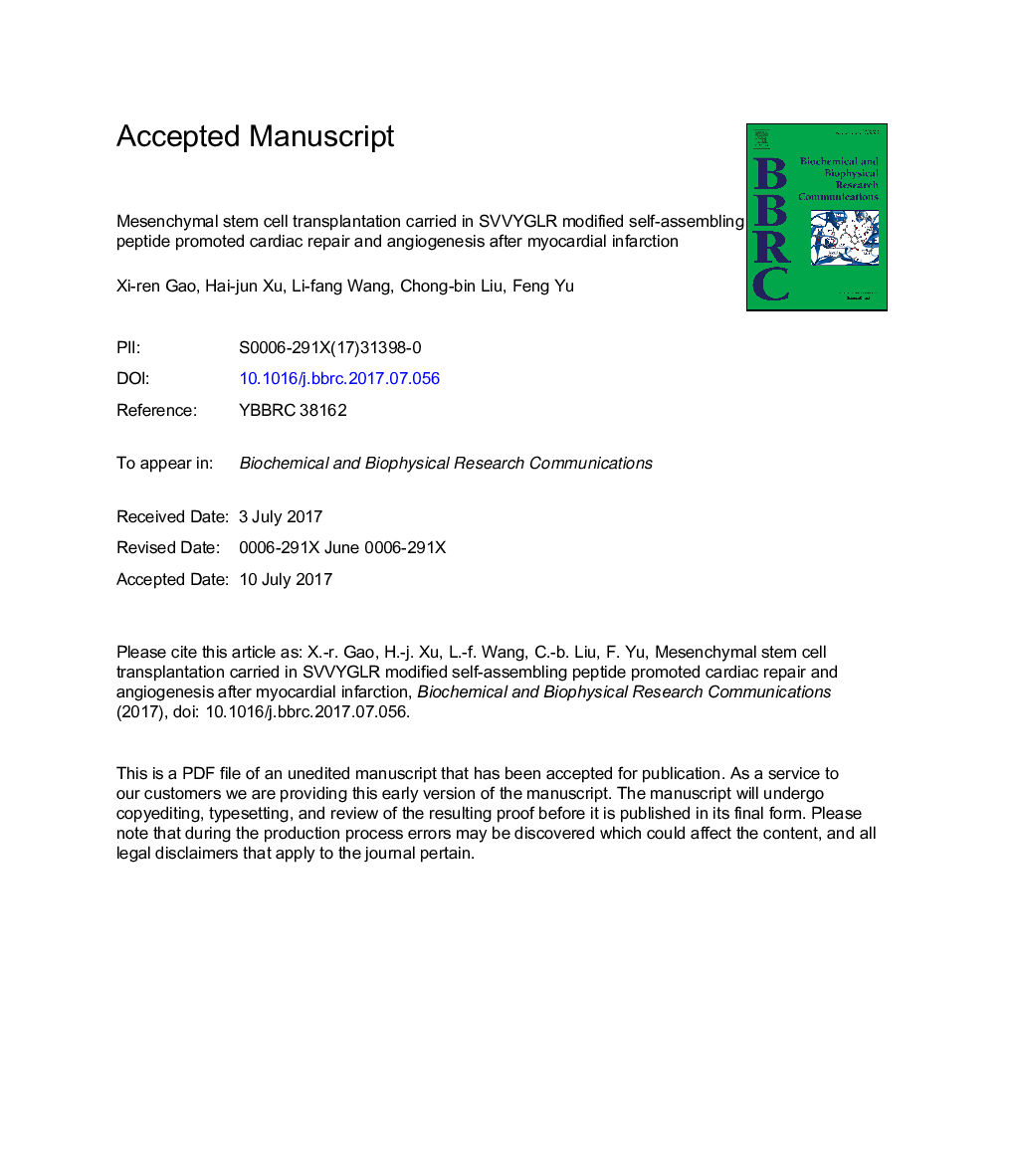| Article ID | Journal | Published Year | Pages | File Type |
|---|---|---|---|---|
| 5504806 | Biochemical and Biophysical Research Communications | 2017 | 27 Pages |
Abstract
The efficiency of stem cell therapy for myocardial infarction (MI) was very low due to the hostile microenvironment and poor blood perfusion. In this study, we designed a new self-assembling peptide through adding angiogenic polypeptide SVVYGLR to the carboxyl terminal of RADA16, and evaluated the therapeutic potential of mesenchymal stem cell (MSC) transplantation carried in this designer self-assembling peptide (DSP) on MI. After the model of cell ischemia and hypoxia was established in vitro, cytoprotective effect of DSP on MSC was detected by AO/EB staining. MI was induced by ligating of the left anterior descending artery in female SD rats. MSC from male rats was labled by GFP with adenovirus transfection. MSC with DSP (MSC-DSP) or without DSP (MSC) were transplanted at the border of the infarcted area. The number of survival cell was more and necrotic cell was less in DSP group than that in control group after ischemia and hypoxia treatment in vitro. At 4 weeks after cell transplantation, compared with the MSC group, improvement of cardiac function was better, infarct size was reduced, collagen content and the number of apoptotic cells was decreased, and there were more GFP or SRY positive cells in MSC-DSP group. Moreover, the number of CD31 or α-smooth muscle actin positive blood vessels in MSC-DSP group was significantly higher than that in MSC group. DSP not only provided a microenvironment for the survival of MSC, but also promoted the angiogenesis after transplantation. This study provided novel strategy and experimental evidence for the clinical application of biomaterials in stem cell transplantation for treatment of ischemic heart disease such as MI.
Related Topics
Life Sciences
Biochemistry, Genetics and Molecular Biology
Biochemistry
Authors
Xi-ren Gao, Hai-jun Xu, Li-fang Wang, Chong-bin Liu, Feng Yu,
